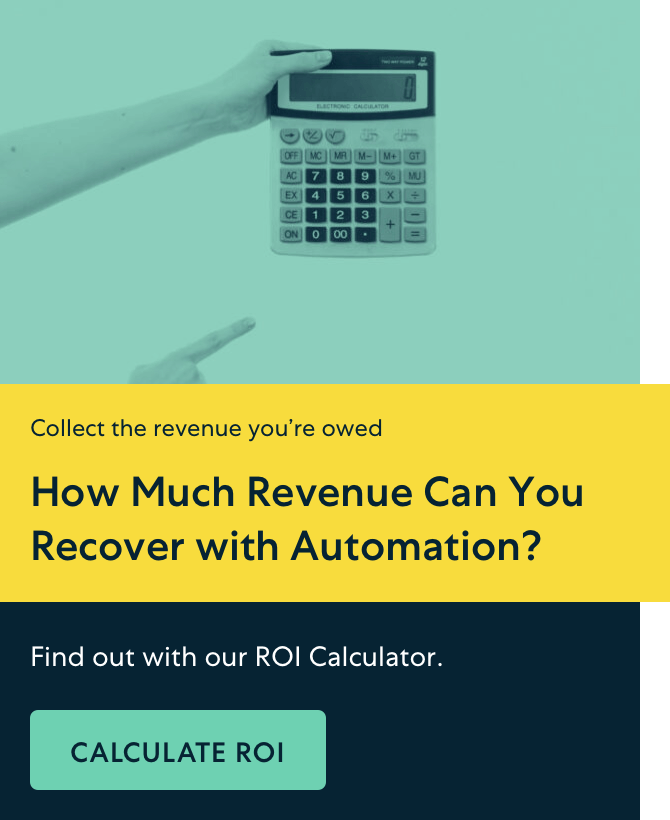Some traditional billing and invoicing methods are tedious and complex, leaving a lot of room for human error. If your business still relies on conventional billing methods, you could be disappointing your customers and hurting your business’s bottom line.
According to Testlio, global payment failures associated with outdated billing methods cost businesses up to $20.3 billion annually.
To help avoid such levels of revenue leakage, we recommend implementing a Billing as a Service (BaaS) solution.
In this article, we’ll look at what BaaS is, how it works, its benefits, and how to choose the right BaaS provider for your business.
TL;DR
- Billing as a Service is a cloud-based solution that automates invoicing, payment processing, tax calculations, and subscription management.
- It can help eliminate the need for costly in-house billing infrastructure, providing scalability and operational efficiency.
- BaaS platforms manage billing workflows from invoice generation to payment collection. They also integrate with banking systems and provide advanced features like recurring billing, usage-based pricing, and real-time analytics.
What is Billing as a Service (BaaS)?
Billing as a Service is a business model involving a cloud-based solution that enables businesses to manage their invoicing and billing processes efficiently without building and maintaining an in-house infrastructure.
It’s a subscription-based service that allows your business to automate tasks like invoicing, payment collections, tax calculations, and recurring billing management. It helps improve operational efficiency, reduce administrative burden, reduce overhead costs, and manage revenues more seamlessly.
BaaS is especially popular with businesses operating on subscription-based models, such as SaaS companies, utility businesses, and media streaming services.
BaaS vs Traditional Billing
BaaS and traditional billing processes starkly differ when it comes to automation, efficiency, and overall effectiveness.
To understand the differences between the two, here’s a comparison table:
| BaaS | Traditional Billing | |
| Infrastructure | Cloud-based solution. The service provider handles maintenance, updates, and customer support. You don’t need to invest in hardware or a skilled IT team. | Needs in-house infrastructure which involves significant upfront investment in servers and software. You’re responsible for system maintenance, updates, and troubleshooting. |
| Automation | Highly automated processes for billing and payments, eliminating time spent on manual input and human errors. | Minimal automation. Often requires significant human input and supervision, potentially leading to multiple errors. |
| Cost Structure | Subscription-based or pay-as-you-go. Businesses often pay for solutions based on usage, without significant upfront investment. | High initial costs for infrastructure, hardware, and skilled personnel. |
| Scalability | Highly scalable. Can accommodate growing business needs or changes in billing requirements. Ideal for startups and growing businesses. | Limited scalability. Growing or changing needs often call for additional investment in infrastructure and resources and significant modifications. |
| Customization | Offers flexibility with APIs and integrations. Merchants can seamlessly connect to their CRMs, ERPs, and payment gateways. | Customization and integration are often complex and costly. Businesses may need to hire specialized developers to modify the system. |
| Time to Market | Quick implementation allows businesses to set up their billing systems within a few days or a week, enabling faster time to market. | Implementation can take months due to the need for hardware installation, software configuration, and staff training. |
While traditional SaaS billing systems may suit businesses with straightforward needs or those already committed to legacy systems, BaaS provides more flexibility, efficiency, and cost-effectiveness. The latter is more suitable for merchants with complex and evolving business needs.
Key Benefits of BaaS
Billing as a Service offers numerous features that cater to growth, efficiency, and adaptability, helping businesses streamline their billing processes.
Here’s a breakdown of its key features and benefits:
Automation
Automation is one of BaaS’s main characteristics. It automates the entire billing process, from generating invoices to payment collection and revenue recognition. This automation significantly reduces manual errors, improves accuracy, and accelerates the billing cycle.
It also automates recurring billing for subscription-based businesses. You can automatically process subscription renewals, send payment reminders for upcoming and delayed payments, and manage failed payments to reduce involuntary churn.
This can also free up human capital, which can then be reassigned to another area in the company.
Scalability
BaaS solutions are highly scalable since they’re designed to grow with your business. Whether you’re a startup or an established enterprise, BaaS platforms can accommodate evolving business needs including growing customer base, feature scaling, and global expansion.
Flexibility
BaaS platforms cater to diverse business models and SaaS billing structures. You get access to features like custom pricing models, including recurring subscriptions, tiered pricing, one-time payments, and usage-based billing. You can also customize your workflows to align with operational needs and customer expectations.
BaaS solutions are highly adaptable, helping you adjust billing parameters in response to market trends or customer demands.
Integration
BaaS platforms seamlessly integrate with other tools and systems to create an enhanced business ecosystem. You can integrate with your CRM and ERP systems, payment gateways, accounting software, and analytics platforms.
This eliminates data silos and ensures a smooth flow of data between different departments. It also enhances data accuracy and streamlines workflows.
How Billing as a Service Works
Billing as a Service covers a broad range of activities. But the concept remains relatively simple—non-bank businesses using a bank’s infrastructure to offer financial products and billing services.
Here’s a step-by-step overview of how BaaS works:
- Account Setup – When businesses subscribe to a BaaS platform, they configure the system to align with their specific business needs. They define the billing models (one-time payments, subscription, usage-based pricing, etc.), set tax rules and compliance requirements, and integrate with other business systems and payment gateways.
- Customer Data Management – BaaS platforms store and manage customer data securely, including contact details, billing history, and payment preferences. The centralized database allows merchants to manage customer accounts and create custom invoices efficiently.
- Invoice Generation and Delivery – BaaS automates the creation of invoices based on predetermined SaaS billing schedules. For subscriptions, invoices are created and sent at regular intervals. For one-time billing, invoices are generated immediately after the transaction is complete. The invoices are distributed through various channels, such as email or customer portal, based on the customer’s preference.
- Payment Processing – BaaS integrates with multiple payment gateways to collect payments and facilitate secure transactions. Customers can pay using multiple payment methods, such as credit and debit cards, ACH transactions, wire payments, and digital wallets. The system records the payment in real time and updates the customer’s account status.
- Recurring Billing and Subscription Management – BaaS helps businesses with subscription-based billing handle automated renewals, prorated charges for mid-cycle subscription changes, payment retries, and dunning management for failed payments.
- Tax Compliance – BaaS automates tax calculations based on appropriate tax rates for different regions and generates tax-compliant invoices.
- Analytics and Reporting – BaaS platforms give business owners insights into key metrics like customer churn, revenue growth, and payment success rates. You can also generate financial performance and health reports to make wise business decisions.
Potential Benefits of Using Billing as a Service
Business owners who adopt Billing as a Service can benefit from:
Improved accuracy and efficiency
Manual invoicing and billing processes are prone to human errors, such as incorrect details and miscalculated taxes. BaaS automates the entire billing process, minimizing billing errors and payment disputes.
It also accelerates the SaaS billing cycle, ensuring timely payments and better cash flow and revenue management.
Scalability for growing businesses
As businesses grow, so do their billing needs and demand for financial services. BaaS solutions are highly scalable, making them suitable for growing businesses. As your company grows, the BaaS platform can accommodate increasing billing volumes.
You also get add-on modules for advanced reporting or customer segmentation as your business expands.
Conversely, if you need to scale down, BaaS APIs can help you deactivate or reduce your services with minimal disruption to the overall operations.
Faster go-to-market for new products and pricing models
BaaS helps businesses quickly introduce new financial products and services as well as pricing models. Software companies can leverage BaaS providers’ existing infrastructure and launch products quicker and with more efficiency.
For example, if your SaaS business needs to introduce a new tiered subscription plan, you can configure it within as little as one hour using your BaaS platform, avoiding delays in market rollout.
Enhanced customer experience and transparency
BaaS can also boost customer satisfaction by providing a seamless and transparent billing process. Customers receive clear, transparent, and detailed invoices, multiple payment methods, flexible pricing models, and automated payment reminders.
BaaS platforms also have self-service portals where customers can manage their billing information and access their billing history.
Customers appreciate the ability to track their invoices online and review reports, further enhancing their experience.
Examples of Billing as a Service Providers
Now that we’ve looked at the basics of Billing as a Service and you know how it works, which brands are the leading BaaS providers?
In this section, we’re going to focus on Stax Bill as a BaaS platform.
Stax Bill is a comprehensive BaaS platform designed to simplify financial operations for businesses across various industries. Known for its robust features, Stax Bill caters to companies looking for a flexible and scalable BaaS solution.
Stax Bill offers the following features and capabilities:
- Subscription management – Stax Bill automates recurring billing for subscription-based businesses. The platform supports custom pricing models, including tiered, flat-rate, and usage-based billing, and simplifies mid-cycle changes like plan upgrades and downgrades.
- Payment processing – Stax Bill integrates with multiple payment gateways to facilitate global transactions. It provides secure and PCI-compliant payment methods, including credit cards, ACH, and digital wallets.
- Tax automation and compliance – Stax Bill automatically calculates taxes based on regional regulations, like VAT and GST. It also generates tax-compliant invoices to streamline reporting and auditing.
- Advanced analytics and reporting – Stax Bill helps you gain valuable insights into revenue trends, customer behavior, and subscription metrics. Stax also supports custom reporting for financial planning and forecasting.
- Seamless integration – Stax Bill seamlessly integrates with popular CRM systems like Salesforce, accounting software like Quickbooks, and ERP platforms to create a unified workflow.
Stax Bill is versatile and serves a wide range of industries, including SaaS, Fintech, telecom, retail, and healthcare industries.
Use Cases for Billing as a Service
BaaS is adaptable and can be applied across multiple industries to manage various billing scenarios efficiently. Here are a few examples of how different industries leverage BaaS to optimize their billing processes:
SaaS businesses managing subscription models
SaaS companies rely on subscription-based pricing models which benefit from recurring billing and flexible payment options. BaaS platforms are ideal for these businesses due to automated subscription billing, recurring revenue recognition, prorated billing, real-time performance analytics, and tax calculations and compliance.
For example, a SaaS business can use BaaS to offer its customers tiered pricing plans, manage free trials, and automate subscription renewals, maximizing revenue potential and ensuring a seamless customer experience.
Telecommunications companies with usage-based billing
Telecom companies often have complex billing needs due to high volumes of transactions and usage-based pricing models. Their challenges include billing customers based on data usage, call duration, or text message count and managing fluctuating charges and dynamic pricing structures.
BaaS solutions help these companies track usage in real time and ensure accurate billing. The solutions also handle tiered data plans and shared family plans for different service levels.
On top of that BaaS platforms integrate with customer support systems to help telecom companies address billing inquiries efficiently.
Marketplaces handling multi-vendor billing
Online marketplaces connecting buyers and sellers face unique challenges when managing multi-vendor billing. Some of these challenges include splitting payments between vendors and platform operators, tracking commissions, fees, and refunds accurately, and ensuring compliance with local regulations for cross-border transactions.
BaaS helps these platforms automate vendor payouts and reconcile transactions in real time. They also provide transparent financial reports for all stakeholders and multi-currency support for international marketplaces.
IoT providers with tiered or metered billing models
Internet of Things (IoT) providers often use tiered or metered billing pricing models based on device usage or data consumption. BaaS solutions can effectively manage these models by tracking usage in real time, generating accurate invoices, and handling complex pricing structures.
For example, an IoT company providing smart home devices can use BaaS to bill customers based on the number of devices connected or the amount of data transmitted, ensuring fair and transparent pricing.
Factors to Consider When Choosing a BaaS Provider
Selecting the right BaaS provider ensures seamless billing operations and meets your unique business needs. Here are some essential factors to consider when choosing a BaaS provider:
Scalability and flexibility
Your BaaS platforms should be able to scale with SaaS business and adapt to its evolving needs. Can the platform handle increasing transaction volumes? Does it support multiple pricing models, payment methods, and currencies?
Answering these questions will help you evaluate whether the solution will scale effortlessly with your business, minimizing disruptions along the way.
Integration capabilities with existing systems
A good BaaS solution should integrate seamlessly with tools in your existing tech stack. Examples of existing systems include CRM (e.g. SaleForce and Hubspot), ERP (e.g. Oracle and SAP), accounting systems (e.g. Quickbooks), and payment gateways.
This avoids duplication of effort by connecting billing workflows with other business functions. It also enhances overall operational efficiency.
Customization and branding options
Your BaaS platform should give you branding and customization options to help you maintain a consistent brand image across all customer interaction channels. Look for the following customization features:
- Ability to customize invoices with your brand logo, colors, and other branding elements
- Support for custom workflows, such as unique discount structures and tax rules
- Localization options, like currency and language customization
This helps you reinforce your brand’s identity and tailor the billing experience to meet industry-specific needs.
Security and compliance standards
Evaluate whether the BaaS provider strictly adheres to security and compliance standards. Data security measures to look for include data encryption to protect sensitive customer details and multi-factor authentication for account access.
Customer support and onboarding process
A good BaaS provider should offer reliable customer support and onboarding process. Check whether the provider offers multiple channel support, like email, phone, and live chat. You should also get access to quality onboarding resources, like tutorials, whitepapers, and documentation.
A smooth onboarding process ensures quick setup and minimal disruptions. Responsive customer support helps sort issues promptly.
Final Words
Billing as a Service (BaaS) is revolutionizing how businesses manage invoicing and payments. The key, of course, is choosing the right solution. With that in mind, select a provider that offers scalable solutions, integrates with your existing systems, and has the right capabilities—including security and compliance—for your platform. Now is the time to move beyond outdated billing systems and embrace a smarter, more efficient way to manage transactions. Get in touch to discover how Stax Bill can help you do just that.






